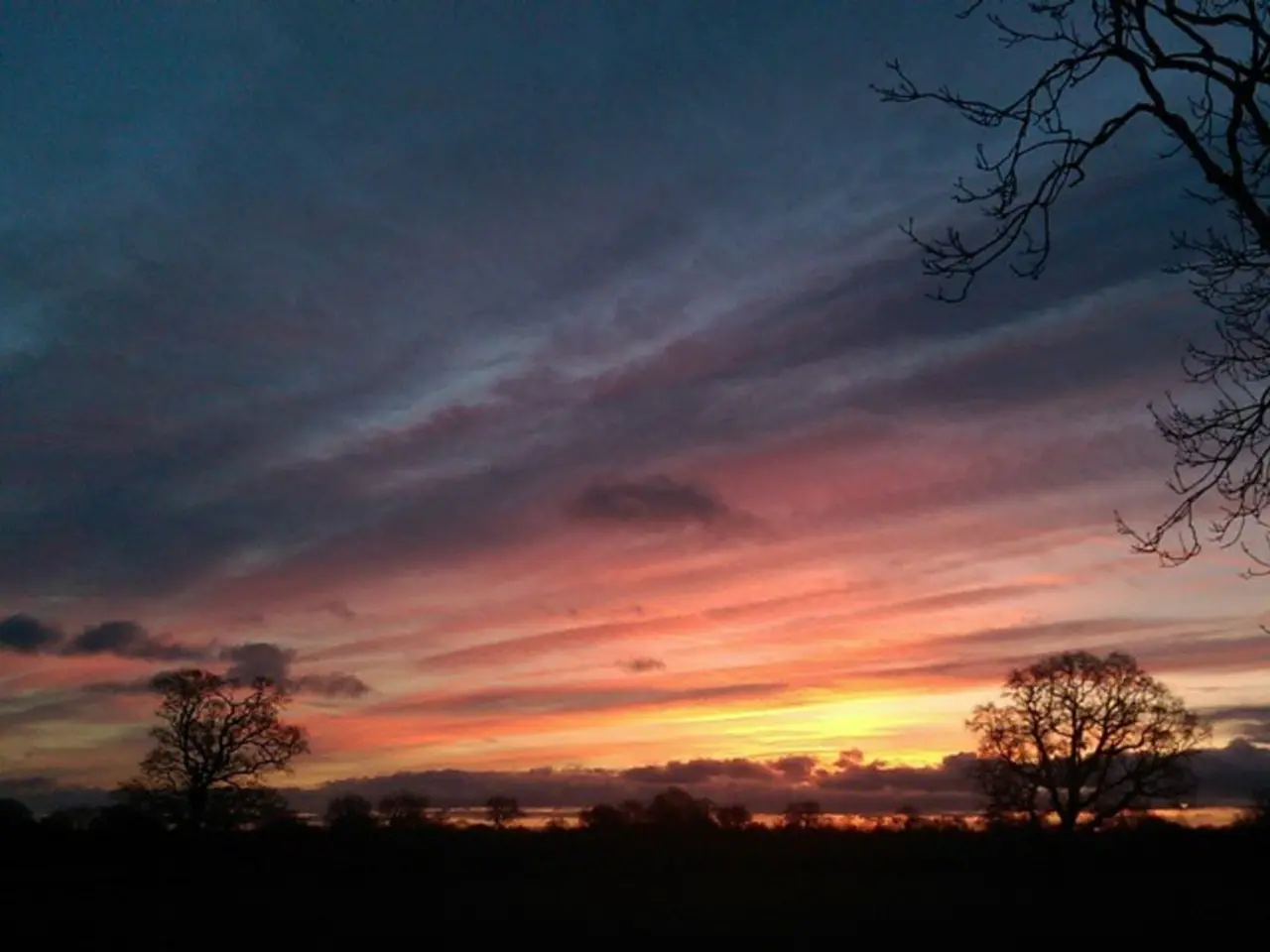Ways to Craft Art Inspired by Nature's Play of Light and Shadow, Awe-Inspiring Ideas for Your Portfolio
================================================================
Nature photography offers a unique opportunity to capture the ever-changing play of light and shadow, creating stunning visual stories that capture the essence of the outdoors. Here are some tips on how to effectively capture and artistically recreate dynamic lighting effects in nature photography.
- Utilize Optimal Lighting Conditions
Shooting during the golden hour - early morning or late afternoon - provides soft, warm light that enhances colours and textures, adding a magical quality to your photos. Pay attention to cloud types, such as low stratus for brief intense sunsets or high cirrus for lingering pastels, to anticipate dramatic lighting conditions.
- Employ Backlighting and Thoughtful Positioning
Place your subject between the light source and camera to produce glowing outlines and emphasize form. Using natural light shining through gaps (e.g., between rocks or leaves) adds depth and ethereal effects.
- Master Long Exposure Techniques
Use a slow shutter speed (1–10 seconds, or minutes for more dramatic effects) with a sturdy tripod and neutral density (ND) filters to capture movement such as flowing water and clouds, transforming scenes with dreamy, silky, or streaked light effects. Balancing exposure to preserve highlight and shadow detail is crucial - bracketing exposures for later blending can help maintain dynamic range.
- Manipulate and Modify Light in the Field
Use tools like reflectors and diffusers to bounce or soften light, filling shadows and balancing exposures, especially in macro or close-up nature shots.
- Enhance and Recreate Lighting Effects in Post-Production
Use advanced software (e.g., Photoshop) to intensify highlights, add cinematic glows, sun flares, and light trails, or adjust colour vibrancy to mimic or amplify natural dynamic lighting.
By integrating these approaches - careful timing and composition, technical mastery in-camera, and skillful post-processing - you can effectively capture and artistically recreate the dynamic lighting effects that make nature photography striking and expressive.
Some additional techniques include:
- Photographing Reflections
Capturing mirror-like reflections during calm dawn moments and warm golden reflections during late afternoon sun adds an extra layer of depth to your compositions.
- Seasonal Documentation
Documenting the precise time of day for each visit maintains consistency in a seasonal study of shadow patterns. Positioning oneself in the same outdoor location monthly throughout an entire year captures how seasonal sun angles create dramatically different shadow patterns.
- Observing Nature's Development
Observing how emerging spring buds create increasingly complex shadow networks as they develop into full leaves offers a fascinating study of nature's intricate interplay between light and shadow.
In conclusion, mastering light and shadow in nature photography not only improves your ability to capture nature's most stunning moments, but also transforms ordinary scenes into captivating visual stories that showcase the beauty and dynamism of the natural world.
- The combined techniques of photography and health-and-wellness practices can contribute to personal growth, as the mindful observation of nature scenes during fitness-and-exercise routines promotes mental clarity.
- A well-designed home-and-garden space that incorporates textures and colors found in nature can positively impact one's overall lifestyle and mood. Reflecting on the delicate balance of light and shadow in nature photography can provide inspiration for such design.
- In the realm of fashion-and-beauty, runway models can replicate the allure of illuminated nature scenes by incorporating elements such as textured fabrics, ethereal makeup styles, and soft lighting in their presentations.
- When preparing food-and-drink, the creative manipulation of light can present visually appealing and inviting dishes, just as knowledgeable photographers do with natural lighting effects.
- Technology, particularly artificial intelligence, can play a role in recreating dynamic lighting effects in nature photography, allowing photographers to analyze and mimic complex lighting scenarios to generate stunning visuals.
- In planning travel destinations, reference nature photography and use it as a guide to explore locations known for their unique and captivating light and shadow displays, like the Alaskan Auroras or the Namibian Sand Sea.





